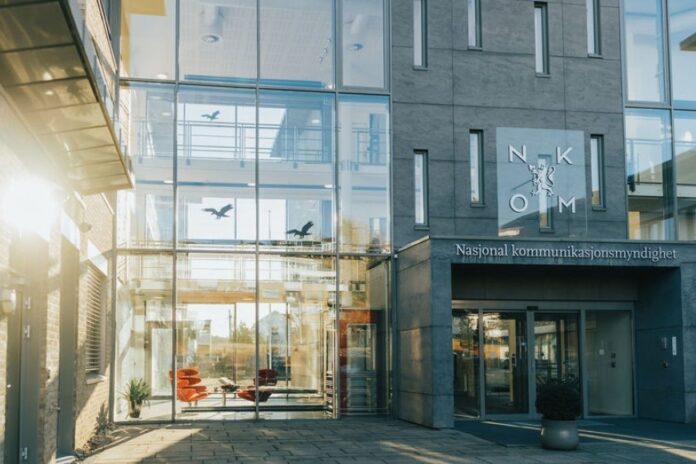Next month, Telia begins shutting down its 2G network while Telenor has postponed until the end of 2027
As carriers like SoftBank are partnering Nokia to launch an outdoor trial in June 2025 using the 7 GHz band, a centimetre-wave frequency under consideration for 6G, beyond the excitement of new technology, Norway’s regulator, the Norwegian Communications Authority (Nkom), has begun telling users it is prudent to start phasing out the country’s 2G network ahead of their announced shutdown.
While Telenor has postponed the shutdown until the end of 2027, Telia has divided the country into eight areas and will start shutting down its 2G network in one area at a time from August. Nkom has done a bunch of research to identify where the technology is still lingering and it reckons a controlled and gradual phasing out of the technology should get underway.
“By starting now, with good planning and close cooperation with the players, we ensure that the transition from 2G takes place in a safe and predictable manner – without endangering life and health,” said minister of digitalisation and public administration Karianne Tung.
Nkom’s survey, which is based on 363 responses from municipal, state and private sectors, shows that most operators already have plans to replace 2G-dependent equipment. Municipalities that need to replace security alarms have placed an order for this and are being followed up by Telia. Elevator suppliers have an overview of elevator alarms that are connected to the 2G network and will be able to respond quickly to requests to replace these.
“A gradual phase-out gives us the opportunity to learn along the way and adjust course if challenges arise. It is a wise and responsible approach to the technological shift we face,” said Tung.
“Everyone who has 2G equipment must replace it as soon as possible. It is very important that Telenor does not perceive it as a cushion that it will only close its 2G network in 2027. If you have not replaced your 2G equipment already, you must do so now, says Nkom CEO John-Eivind Velure.
Norway is phasing out its 2G networks operating in the 900 MHz and 1800 MHz bands to repurpose the spectrum for more efficient 4G and 5G services. Telia will begin shutting down its GSM network in August 2025, completing the process by December 2025, while Telenor plans to maintain 2G services until the end of 2027, with shutdown expected in early 2028. The freed-up spectrum will be reallocated to enhance mobile coverage, capacity, and speed across Norway’s LTE and 5G networks.
We’re going up and down
Although many would be surprised 2G is still around, it is, especially in things like machine-to-machine signal transmission and can affect everything from elevator alarms, to eCall and monitoring of unstable mountain areas. If equipment that relies on 2G technology is not replaced before the 2G network is turned off, the equipment and the service associated with the equipment will cease to function.
Nkom began work in mid-April this year to collect information to map the consequences of the 2G shutdown, specifically the consequences for “security and emergency response systems” in line with the parliamentary resolution. Apparently, The elevator suppliers have good overview of which elevators are still connected to the 2G network, and information and offers have been sent out about the transition to 4G-based solutions. Switching from a 2G to a 4G modem is normally a relatively simple operation, and elevator suppliers estimate an average cost of 20,000–30,000 kroner per upgrade.
eCall in hand
Nkom has concluded that the planned shutdown of 2G networks will have manageable consequences for the eCall system, which automatically alerts emergency services in the event of a vehicle crash. Currently reliant on 2G and 3G networks, eCall will transition to 4G and 5G under new EU regulations. From 1 January 2026, public safety answering points must support eCall over 4G/5G, and from 2027, all new vehicles approved in the EU must be equipped with this newer version.
While eCall services for existing vehicles will stop functioning once 2G/3G networks are decommissioned, work is under way to explore aftermarket solutions, such as retrofit devices or portable eCall units. In the meantime, many vehicles with foreign SIMs are expected to continue accessing Telenor’s 2G network, which will remain operational until the end of 2027.
Norway’s fire and rescue service currently receives eCall alerts but has reported a high rate of false alarms, raising concerns about operational strain. Another key area affected is emergency calls from handsets that only support 2G voice. These will continue to function on Telenor’s network until its shutdown, but will fail once 2G is fully retired.
Users are encouraged to upgrade devices, especially as many foreign users still rely on basic 2G-only phones. In its summary, Nkom found no unmanageable risks resulting from the 2G shutdown. Most users appear to be on track with equipment replacement, though an accelerated transition to 4G/5G is recommended, particularly for Telenor customers, to ensure all critical systems are upgraded before the 2027 deadline.




